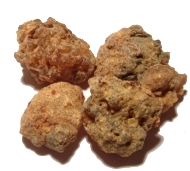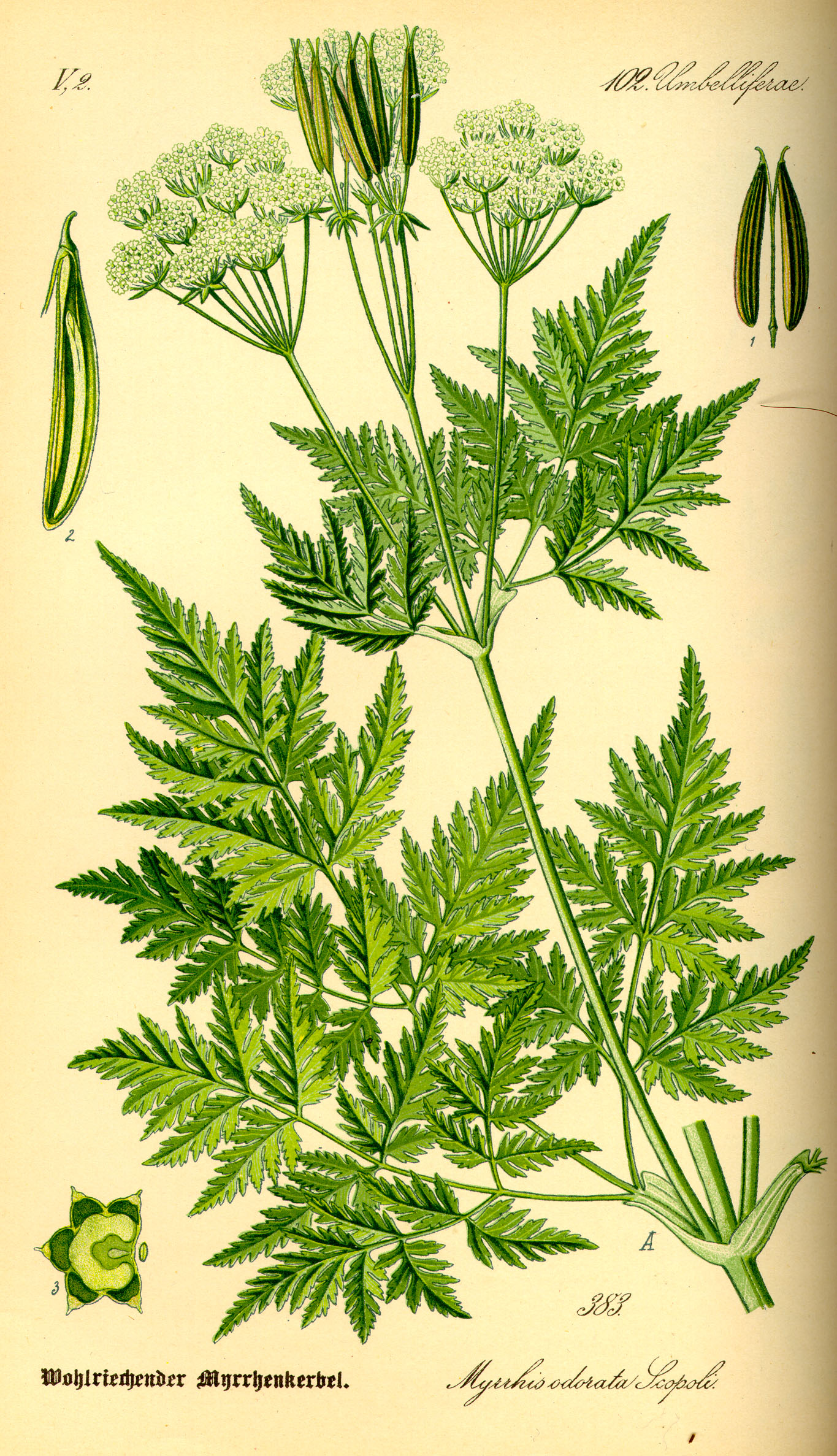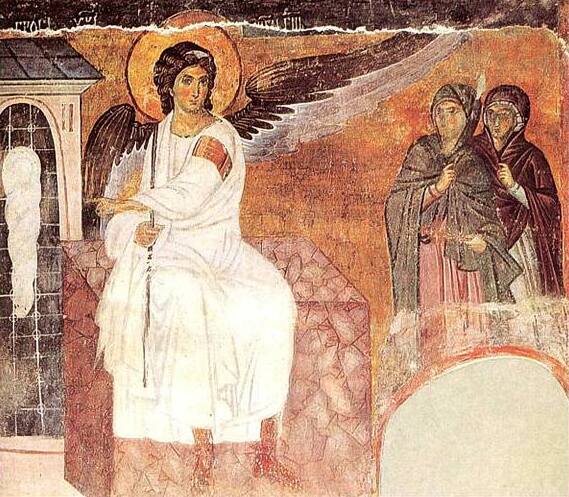|
Myrrh (other)
Myrrh is a natural gum or resin extracted from a number of small, thorny tree species of the genus ''Commiphora''. Myrrh may also refer to: * Abyssinian myrrh (''Commiphora habessinica''), a shrub or tree * African myrrh (''Commiphora africana''), a deciduous tree * Myrrh, a common name of cicely, a perennial plant in the celery family * ''Myrrh'' (album), by Robin Williamson (1972) * Myrrh Records, an American Christian music record label See also * Gold, frankincense and myrrh, the gifts of the Biblical Magi * ''Gold, Frankincense and Myrrh'', a 1971 Croatian film * Myrrha (other) * Myrrhbearers, the individuals mentioned in the New Testament who were directly involved in the burial of Jesus or who discovered the empty tomb * Myrrh-streaming The holy figures of the Eastern Orthodox Church (and of the Eastern Catholic Churches of the Byzantine Rite) have various customary saint titles with which they are commemorated on the Eastern Orthodox liturgical calendar, lit ... [...More Info...] [...Related Items...] OR: [Wikipedia] [Google] [Baidu] |
Myrrh
Myrrh (; from Semitic, but see '' § Etymology'') is a gum-resin extracted from a number of small, thorny tree species of the genus ''Commiphora''. Myrrh resin has been used throughout history as a perfume, incense and medicine. Myrrh mixed with posca or wine was common across ancient cultures, for general pleasure, and as an analgesic. Extraction and production When a wound on a tree penetrates through the bark and into the sapwood, the tree secretes a resin. Myrrh gum, like frankincense, is such a resin. Myrrh is harvested by repeatedly wounding the trees to bleed the gum, which is waxy and coagulates quickly. After the harvest, the gum becomes hard and glossy. The gum is yellowish and may be either clear or opaque. It darkens deeply as it ages, and white streaks emerge. Myrrh gum is commonly harvested from the species ''Commiphora myrrha''. Another commonly used name, ''Commiphora molmol'', is now considered a synonym of ''Commiphora myrrha''. ''Commiphora myrrha ... [...More Info...] [...Related Items...] OR: [Wikipedia] [Google] [Baidu] |
Abyssinian Myrrh
''Commiphora kua'', sometimes known as Abyssinian myrrh or the Yemen myrrh, is a plant native to northeast Africa and the Arabian Peninsula, including Djibouti, Eritrea, Ethiopia, Zambia, Malawi, Oman and Yemen. It was first described as ''Balsamodendrum kua'' in 1847, and has many botanical synonyms. It can be recognised by its simple, serrate leaves and by the pseudo aril, covering the seed, which has four almost linear arm-like lobes. Description ''Commiphora kua'' is a widespread species and it varies greatly in appearance between drier areas and those most affected by the monsoon. The plant varies dramatically from low, spiny shrubs with small leaves in the drier areas to medium size, unarmed trees with a distinct trunk and large leaves in areas affected by the monsoon. It is dioecious, with bark peeling of flaking and when cut it oozes a pleasant smelling resin. The leaves alternate or are fascicled on short condensed side shoots. The leaves are 10-50mm long x ... [...More Info...] [...Related Items...] OR: [Wikipedia] [Google] [Baidu] |
African Myrrh
''Commiphora africana'', commonly called African myrrh, is a small deciduous tree belonging to the Burseraceae, a family akin to the Anacardiaceae, occurring widely over sub-Saharan Africa in Angola, Botswana, Burkina Faso, Chad, Eswatini, Eritrea, Ethiopia, Kenya, Mali, Mauritania, Mozambique, Namibia, Niger, Senegal, Somalia, South Africa, Sudan, Tanzania, Uganda, Zambia and Zimbabwe. On sandy soils this species sometimes forms pure stands, deserving consideration as a plant community or association. Closely related to ''C. glandulosa'', ''C. africana'' is usually some 5m tall, its branchlets often ending in spines. Its bark is grey-green, peeling to reveal a shiny surface, red when damaged, and then exuding bdellion, a clear, edible, aromatic gum ('Commiphora'='gum-bearing'). The leaves are trifoliate with a large terminal leaflet and two small side leaflets, bluntly toothed, and, as with most Commiphoras, pleasantly aromatic when crushed. Fruits are reddish, and about 6–8&n ... [...More Info...] [...Related Items...] OR: [Wikipedia] [Google] [Baidu] |
Cicely
''Myrrhis odorata'', with common names cicely (), sweet cicely, myrrh, garden myrrh, and sweet chervil, is a herbaceous perennial plant belonging to the celery family Apiaceae. It is the only species in the genus ''Myrrhis''. Etymology The genus name ''Myrrhis'' derives from the Greek word myrrhis �υρρίς an aromatic oil from Asia. The Latin species name ''odorata'' means ''scented''.M. Grieve A Modern Herbal/ref> Description ''Myrrhis odorata'' is a tall herbaceous perennial plant growing to 2 m ft 6 intall, depending on circumstances. The leaves are fern-like, 2-4-pinnate, finely divided, feathery, up to 50 cm long, with whitish patches near the rachis. The plant is softly hairy and smells strongly of aniseed when crushed. The flowers are creamy-white, about 2–4 mm across, produced in large umbels. The flowering period extends from May to June. The fruits are slender, dark brown, 15–25 mm long and 3–4 mm broad. Distribution and habitat ... [...More Info...] [...Related Items...] OR: [Wikipedia] [Google] [Baidu] |
Myrrh (album)
''Myrrh'' is a folk album and the solo debut of Robin Williamson, released in 1972. Robin Williamson is noted as being a founding member of The Incredible String Band. ''Myrrh'' was subjected to a low budget and placed on the Island label's lowest sub-label, ''Help''. The album was downgraded by poor-quality sound mixing and a single-sleeve cover design. As 1971 came to a close, it was evident that The Incredible String Band was drifting into commercial-orientated rock. Williamson was the second member, the other being Mike Heron, to release a solo album. This album is composed of folk songs that are enriched with instrumentals. In many ways it is relatable to The Hangman's Beautiful Daughter. For one, the tracks offer a noble dreamscape with an added effect by the multiple personnel involved in vocal harmonies (including ISB members Licorice McKechnie and Malcolm Le Maistre). They are borderlined by bass and drumming. It also contains Williamson's most extraordinary vocal per ... [...More Info...] [...Related Items...] OR: [Wikipedia] [Google] [Baidu] |
Myrrh Records
__NOTOC__ Myrrh Records (also known as Myrrh Worship) was an American Christian music record label. According to ''Encyclopedia of American Gospel Music'', the label was instrumental in developing a popular following for contemporary Christian music, as the label that first published music by: Barry McGuire, 2nd Chapter of Acts, Randy Matthews and Nancy Honeytree. The label is also known for serving as the first label for popular Christian crossover singer Amy Grant, who joined the label in 1977. She stayed with Myrrh until 1999, and with Word Records until 2005. The label has released recordings by Al Green, B.J. Thomas, Benny Hester, Billy Preston, Bob Ayala, The Choir, Cliff Richard, Crystal Lewis, Dakoda Motor Company, David and the Giants, GLAD, Jaci Velasquez, David Meece, Malcolm and Alwyn, Mark Heard, Michael and Stormie Omartian, Mike Warnke, Miss Angie, Maria Muldaur, One Bad Pig, Petra, Phil Keaggy, Randy Matthews, Randy Stonehill, Richie Furay, Earth, Wind & Fir ... [...More Info...] [...Related Items...] OR: [Wikipedia] [Google] [Baidu] |
Biblical Magi
The biblical Magi from Middle Persian ''moɣ''(''mard'') from Old Persian ''magu-'' 'Zoroastrian clergyman' ( or ; singular: ), also referred to as the (Three) Wise Men or (Three) Kings, also the Three Magi were distinguished foreigners in the Gospel of Matthew and Christian tradition. They are said to have visited Jesus after his birth, bearing gifts of gold, frankincense and myrrh. They are regular figures in traditional accounts of the nativity celebrations of Christmas and are an important part of Christian tradition. The Gospel of Matthew is the only one of the four canonical gospels to mention the Magi. has it that they came "from the east" to worship the "king of the Jews". The gospel never mentions the number of Magi. Still, most western Christian denominations have traditionally assumed them to have been three in number, based on the statement that they brought three gifts. In Eastern Christianity, especially the Syriac churches, the Magi often number twelve. Their i ... [...More Info...] [...Related Items...] OR: [Wikipedia] [Google] [Baidu] |
Gold, Frankincense And Myrrh
''Gold, Frankincense and Myrrh'' (''Mirisi, zlato i tamjan'') is a 1971 Croatian film directed by Ante Babaja. It is based on the 1968 novel of the same name by Slobodan Novak Ante Slobodan Novak (3 November 1924 – 25 July 2016) was a Croatian writer and novelist. He is best known for his novel ''Gold, Frankincense and Myrrh'' (1968), often listed as one of the best Croatian novels of the 20th century. Biography N .... References External links * 1971 films 1970s Croatian-language films Films directed by Ante Babaja Jadran Film films Films based on Croatian novels Croatian drama films Croatian black-and-white films 1971 drama films Yugoslav drama films {{Croatia-film-stub ... [...More Info...] [...Related Items...] OR: [Wikipedia] [Google] [Baidu] |
Myrrha (other)
*
...
Myrrha is the mother of Adonis in Greek mythology. Myrrha may also refer to: * Myrrha, a character from Lord Byron's play '' Sardanapalus'' * ''Myrrha'' (Caplet cantata), a cantata by André Caplet * ''Myrrha'' (Ravel cantata), a cantata by Maurice Ravel * 381 Myrrha, a very large main-belt asteroid * MYRRHA, a developmental nuclear reactor designed by SCK•CEN * "Myrrha" (short story), by Gary Jennings Organisms * ''Libythea myrrha'', a butterfly of India * ''Myrrha'' (beetle), a genus of ladybug beetles ** '' Myrrha octodecimguttata'' a species of ladybug * '' Polyommatus myrrha'', a butterfly of Turkey and the Caucuses * ''Commiphora myrrha'', a tree in the Burseraceae family See also * Myrrh (other) Myrrh is a natural gum or resin extracted from a number of small, thorny tree species of the genus ''Commiphora''. Myrrh may also refer to: * Abyssinian myrrh (''Commiphora habessinica''), a shrub or tree * African myrrh (''Commiphora africana'') ... [...More Info...] [...Related Items...] OR: [Wikipedia] [Google] [Baidu] |
Myrrhbearers
In Eastern Orthodox Christian tradition the Myrrhbearers (Greek: Μυροφόροι; Latin: ''Myrophorae''; Slavonic: Жены́-мѷроно́сицы; ro, mironosiţe) are the individuals mentioned in the New Testament who were directly involved in the burial or who discovered the empty tomb following the resurrection of Jesus. The term traditionally refers to the women with myrrh who came to the tomb of Christ early in the morning to find it empty. In Western Christianity, the two women at the tomb, the Three Marys or other variants are the terms normally used. Also included are Joseph of Arimathea and Nicodemus, who took the body of Jesus down from the cross, embalmed it with myrrh and aloes, wrapped it in clean linen, and placed it in a new tomb. (, , , , ). The women followed Jesus during his earthly ministry in Galilee, providing for him and his followers out of their own means (). They remained faithful to him even during the most dangerous time of his arrest and execu ... [...More Info...] [...Related Items...] OR: [Wikipedia] [Google] [Baidu] |
Myrrh-streaming
The holy figures of the Eastern Orthodox Church (and of the Eastern Catholic Churches of the Byzantine Rite) have various customary saint titles with which they are commemorated on the Eastern Orthodox liturgical calendar, liturgical calendar and in Canonical Hours#Eastern Orthodox and Greek-Catholic usage, Divine Services. The following list explains the references: *Theologian: Has classical meaning, but only three saints are given the appellation ''Theologian'': John the Theologian, Gregory the Theologian, and Symeon the New Theologian. * *Confessor of the Faith, Confessor: one who has suffered for the faith but not martyred outright * Enlightener: the saint who first brought the faith to a people or region, or who did major work of evangelization there *Equal-to-the-Apostles: one whose work greatly built up the Church, whether through direct missionary work or through assisting the Church's place in society *Fool-for-Christ: a saint known for his apparent, yet holy insanity ... [...More Info...] [...Related Items...] OR: [Wikipedia] [Google] [Baidu] |


.jpg)
